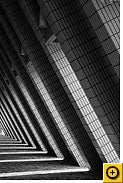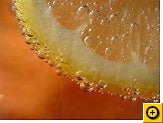Getting colors into balance, finding an HDR app, taking concert photos, and more.
My parents live a few thousand miles from me, so I typically check in with them each week on the phone. Last week, my dad asked me a digital photo question, and I had to defer. "Send your question to question@davejoh.com," I told my father, "and if your question is selected, I'll answer it in the Digital Focus newsletter."
So here's the latest edition of reader mail--and sorry, Dad, it doesn't look like your question made it this time. If anyone else has a question, though, you can do what my dad does: Send me an e-mail.
Get published, get famous! Each week, we select our favorite reader-submitted photo based on creativity, originality, and technique. Every month, the best of the weekly winners gets a prize valued at between $15 and $50.
Here's how to enter: Send us your photograph in JPEG format, at a resolution no higher than 640 by 480 pixels. Entries at higher resolutions will be immediately disqualified. If necessary, use an image editing program to reduce the file size of your image before e-mailing it to us. Include the title of your photo along with a short description and how you photographed it. Don't forget to send your name, e-mail address, and postal address. Before entering, please read the full description of the contest rules and regulations.

Vanessa says: "I took this in Hong Kong. Because we were still jetlagged, we went out very early in the morning to walk around the city and chanced upon the beautiful morning sun shining through these slanted columns, creating an infinity of triangles."

Russ writes: "I took this shot of four egrets outside my office; they were marching through the grass trying to scare up bugs for dinner. I took it with my Pentax K100D and Sigma 50-500 lens."

Congratulations to Johanna and to everyone else who won a Hot Pic of the Week last month. Keep those entries coming!
See all the Hot Pic of the Week photos online.
I recently attended a wedding. The church was predominately yellow; there were yellowish brown pews with light yellow walls, there were stained glass windows, and both fluorescent and incandescent lighting, recessed in the ceiling. A lot of my pictures turned out very yellow! What can I do?
--Patty Hardy, Monterey, California
It sounds like setting the camera's white balance might have rescued some of your photos, Patty. When you're in a tricky lighting situation--such as when there's mixed florescent, incandescent, and natural lighting, for example, it's a good idea to set the white balance manually using a white or gray card. (Check your camera manual for instructions on how to do that.)
But even now, all is not lost. You can open your yellowish photos in a photo editing program like Paint Shop Pro or Adobe Photoshop Elements and use the white-balance adjustment to tweak the images until the color looks more natural. Another option: Try the automatic fix feature in your photo editor, like Photoshop Elements's Auto Adjust or Paint Shop Pro's One Step Photo Fix.
Dave, you really got my attention with the High Dynamic Range photography lesson in your recent newsletters. My favorite subjects are landscapes, and I'd like to try my hand at HDR photography too. I have been looking into upgrading to Paint Shop Pro 11, but it appears that the program doesn't include HDR. Is that true? I'd hate to have to learn a new program.
--John Klock, Charlotte, North Carolina
I'm afraid it is true, John. Corel Paint Shop Pro 11 doesn't include an HDR feature. There are a limited number of programs that have HDR capabilities. The ones I know about are Ulead PhotoImpact, Adobe Photoshop CS3, and HDRSoft Photomatix Pro, the program I used for my newsletters on the subject: "Stunning Photos With High Dynamic Range, Part 1" and "Stunning Photos With High Dynamic Range, Part 2."
I am very new to photography and am trying to take a tricky photo without much luck. I have a photograph that was printed on glossy paper. I am trying to take a picture of this picture, using my digital camera. No matter what I do, I can't get a good picture. I get the glare from the flash. I have tried to change the lighting in the room, I have covered the flash part of my camera with a stocking diffuser, my finger, paper and other things yet I just can't get a good, clear picture. This picture is going to be used on the cover of a book. Any suggestions?
--Tiva Wallon, Boston
Sure, Tiva. To be honest, what you're trying to do is extremely difficult, and even if you do it well, the results will be only mediocre--certainly it'll never be of sufficient quality for publication on a book cover. It sounds like what you really want to do is scan the photo using a flatbed scanner. Even a $99 scanner would do a much better job than any camera. Worst case, you could simply take the photo to a copy shop and have it scanned there.
Could you share some tips for taking pictures at an indoor concert? Mine typically come out too dark or too blurry.
--Bill Fournier, Cascade, Colorado
Indoor concerts are tricky, Bill, because there's so little light available. Your camera struggles to properly expose the photo, and ends up using a long shutter speed--which results in blur. If you tell the camera to use a faster shutter speed, the photos will probably come out too dark. The fix is to increase the camera's ISO, which is the setting that controls its sensitivity to light. Maximize the ISO at a concert and you'll get grainy, "noisy" photos, but they should be sharper and better exposed.
I have been an amateur photographer for about 50 years. I retired my 35mm and have been shooting lots of digital photos recently. My problem surfaced when I moved from my old monitor to a new flat, wide-screen display. Both monitors run at 1024 by 768, but the people in the photos look fatter or stretched on the new monitor. I tried several different programs to view the pictures, but they all look the same. Any suggestions? I am thinking about hooking my old monitor just for viewing pictures.
--Tim Berbaum, Cananea Sonora, Mexico
Actually, Tim, the problem is the fact that you have the new wide-screen monitor configured to run at the same old resolution (1024 by 768) as the old monitor. That's roughly square (actually a 4:3 aspect ratio) but your new wide-screen monitor needs a resolution that matches its aspect ratio, which is 16:9. Check your monitor's manual; I think you'll find it should be running at a resolution closer to 1900 by 1200. After you fix that, everything will look much better on your new display.
http://www.ecoustics.com/pcw/howto/132762